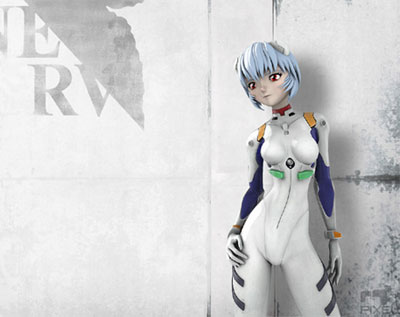
3D Animator
Special thanks to Liem Nguyen for taking time out of his busy schedule to talk about his experience as a 3D Animator.
Liem Nguyen
//3D Animator
AA: Where did your love of 3D and animation come from and how old were you when you decided you wanted to become a 3D Artist?
LN: I grew up on the old Tom n' Jerry, Mickey Mouse and Bugs Bunny cartoons. As a kid, I remember waking up at 6am just to catch the Saturday morning cartoons on television. Later on, films like Jurassic Park and The Fifth Element made a huge impact on me. They inspired me to learn as much as I could about this new technology and art form.
In terms of becoming an animator, I didn't just wake up one morning and decided to be one. Rather, it was more of a gradual evolution. I turned my love of cartoons into a passion for drawing, which led to an education in traditional animation. That path eventually transitioned into 3D animation, where I am today.
AA: When you made the decision to be an animator what was the first step you took to make your dream a reality?
LN: If you think of reaching your dream as a journey, it's a good idea to be fully equipped and prepared before venturing out. The first step for me was simply research. I wanted to learn as much as I could about the animation world. This included borrowing animation history books from the library, renting animation classics from a video store, subscribing to animation magazines, checking out animation studios online and talking to some animators at the National Film Board headquarters in my city.
AA: You attended the prestigious Sheridan College known for their animation program, can you tell us about your experience at Sheridan College?
LN: The four years that I spent at Sheridan College made a huge and positive impact on my life and career. Granted, the college has top-notch facilities, great instructors and a finely-tuned animation curriculum over the years. but the real value was in us, the students. Having such a prestigious reputation, Sheridan College attracted many artists and animators from around the world. This collection of talent and ambition created a synergy - a competitive yet friendly atmosphere where everyone always strived to do better.
AA: Were your animation classes very competitive?
LN: Yes, the classes were very competitive. A perfect example of this was one of our first assignments. The task was to animate a round ball swinging back and forth on a pendulum. The students managed to turn this simple and straightforward assignment into a complex and competitive ordeal. Some people had beautifully shaded grandfather clock mechanisms, while others had the ball bouncing around on very extravagant paths, missing the whole point of the exercise. Nevertheless, it was fun working in that kind of competitive environment.
AA: What type of classes did you take while studying to become an animator?
LN: Some of the classes included layout and design, character design, life drawing, storyboarding, animation history and of course, animation. On occasion, we would have guest speakers from Pixar, Dreamworks, Square and Nelvana to name a few. We also made class field trips to the zoo, museum and Royal Winter Fair to sketch people and animals. In our final year, the thesis was to combine everything we had learned in these classes and produce our own animated short film, from beginning to end.
AA: If you could do it all over again is there anything you would change about your experience in animation school?
LN: All in all, I cherished every moment of my time at Sheridan College. During that time, I learned a lot of new things, improved my skills dramatically and had a great time. Equally important, I made a lot of new friends whom have all gone on to work at different studios around the world.
AA: How important is it for aspiring animators to attend College/Art School? Do you think formally trained animators have an advantage over self taught animators?
LN: There are advantages and disadvantages to both methods. What it all boils down to is the individual's determination, skills and attitude. And besides, the real training begins once an animator gets a job and works together with other people in a production environment.
AA: How did you get your first paying job as an animator and how old were you?
LN: I was 18 when I first got paid for doing animation. By chance, one of the directors from Frantic Films saw my animation line tests when I was in high school and offered me an internship at his company. That summer, I shared a tiny one room apartment office with three other animators, doing animation and special effects. There, I started with 3D Studio Max tutorials on a Pentium 66 MHz with a fuzzy, 14-inch CRT monitor and nearly went blind. But I didn't mind because I felt grateful for the opportunity to hang out and learn from my mentors. My first real work there was to animate a fleet of jumbo jets flying across the sky. I poured my heart into the models, the realistic texturing and animation. When the commercial finally aired on television, it was a blur in the distance that barely lasted over a second. Needless to say, it was my proudest moment up to that point.
AA: Did art school fully prepare you for your first job as an animator or did you experience a lot of growing pains?
LN: It's impractical to expect school to fully prepare you for the real world. If you keep an open mind you really never stop learning - whether you're sitting in the classroom, starting your first day on the job or directing your twentieth feature film. In a way, what school can successfully do is instill this perceptive spirit in you. After graduating from Sheridan College, I could never watch an animated movie without analyzing it to bits in my head - which can be viewed as a gift and a curse!
AA: You have experience working in many different industries - everything from Movie Visual Effects, Video Game Development, Television Commercials, Animated children's programs and more. Could you tell us which industry was most enjoyable and offered the most creative freedom and which industry was the least enjoyable to work in?
LN: It would be unfair to single out one industry as better than the others. What if I tell you what aspects I did enjoy from each one instead? In movie visual effects, the production schedule is quite long. Therefore, you have a lot of time to focus on the quality and perfect your work. On the downside, you are often at the whim of eccentric movie directors whose last-minute decision can render your months of hard work obsolete. With video games, you get the satisfaction of providing endless hours of enjoyment to a large audience of your peers. With television commercials, you get the thrill of working on something totally different every couple of weeks.
AA: What advice would you give to our readers who want to work for video game companies and what they can expect? What should they not expect?
LN: I've worked for a couple of video game studios including EA Games in Vancouver, Canada. One common misconception of 3D artists is that they will have a lot of variety and creative input in the design of a title. In fact, you're a small but vital part of a larger vision. For example, your specific job might be to clean up the motion capture or perhaps model a character based on conceptual artwork provided to you. Furthermore, technical restraints of video games such as polygon counts further limit your freedom. However, working in a team can still be a very rewarding experience and you get a chance to really excel at the one thing you do.
AA: How competitive is the animation field?
LN: It depends on how you look at it. True, there are a lot of other animators out there that you have to compete with. But why not use that to your advantage? Building good relationships, collaborating and learning from others is the key to being successful in this industry. This may sound cliché but it's true - the 3D animation industry is a tightly knit community where you run into the same people all the time. A majority of the work I get is through social networking and receiving recommendations from fellow animators. On the flipside of that, I try to share knowledge and help out others whenever I get the chance.
AA: Which piece of art in your portfolio are you most proud of and why?
LN: The Little Bopeep animated short film that I am currently working on is what I am most proud of. A few years ago, my Sheridan roommates and I came up with the idea - a modern retelling of the Bopeep nursery rhyme. Our version includes a demented shepherdess who builds a sheep-cloning machine to replace her flock that has gone missing. I enjoy working on it because it's such a collaborative effort. Over the years, at least a dozen artists have contributed to it. Currently, you can view the entire animatic and some character designs on my website (www.pixelreborn.com). I am hoping to post some 3D character models and animation tests soon.

AA: Your "Rei Plug Suit" piece is one of my favorites. Could you tell us a little about this piece and how long did it take to finish?
LN: I am a big fan of Japanese animation and one of the most influential shows was Neon Genesis Evangelion. Initially, I had chosen to create Asuka. But at the time, I was inexperienced and the result didn't turn out great. A few years later, I revisited the project and decided to start over with Rei. The modeling took approximately a week's worth of evenings. The rest of the steps - unwrapping, texturing, rigging, skinning, lighting and rendering took another week's worth of evenings. My next step is to animate her in a short action sequence. I've done some preliminary walk cycle tests that look pretty sexy. Stay tuned for more!

AA: Could you also tell us about your "Spider Mech" animation? How long did it take and what software was used to create it?
LN: While I was working for Frantic Films, one of the projects they pitched for (and eventually got) was the Matrix sequels. At the time, we were confident that we could do the work, but we didn't have anything similar to show on our company demo reel. So I took the initiative and came up with the Spider Mech. For the next four months, I would work on it here and there, during my spare time, evenings and weekends. I designed and modeled it after the robot sentinels from the first Matrix movie. For the animation, I was inspired by the spider tank from the Ghost in Shell SAC series. The software used was 3D Studio Max. The lighting was done by a talented co-worker named Chris Pember, using Brazil R/S.
AA: The number one question we are asked here at Animation Arena is the "How do I become an animator?". How would you answer this question?
LN: To become an animator, one has to animate! The answer is as simple and complicated as that. It's easy to get caught up in the many animation books to read, online tutorials to learn, cartoons to study and so forth. These are all helpful, but you won't make any progress until you sit down and really focus on just animating. Grab a simple rig and move it around - try to act out a scene and convey some emotion with your character. You will find that animation is hard work, but keep practicing!
AA: What's the next step for you as an animator? What would you like to do that you haven't done as an animator?
LN: As an animator I am always trying to improve my own skills and learn new things. In the 3D industry, the technology is growing so quickly that it takes a real effort not to fall behind. In terms of a long term goal, I would like to create a piece of animation that communicates something meaningful and leaves a positive mark on others. Perhaps it will take me an entire lifetime to figure it out, but to me that would be the ultimate achievement.
AA: Any final words of wisdom for all the aspiring animators out there?
LN: Yes, read Animation Arena everyday and tell all your friends about it!! Hehehe... Seriously though, all you have to do is work hard and remain positive. If you are enjoying what you do, it will come across in your work.
It was my pleasure and an honor to be considered for an interview with Animation Arena. If you have any questions or comments, I would be glad to discuss them further.
Good luck to all the animators out there!
liem@pixelreborn.com
Random Test Title for any h2 header if you want.
You wont be able to see this section because display is set to none.










